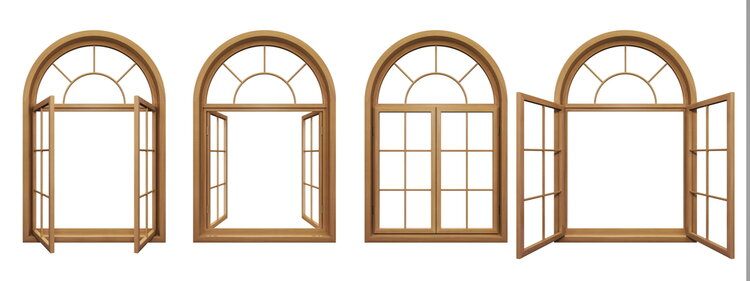
Part of the fun of a do-it-yourself home renovation project is the chance to insert your personality. This is what makes your home truly unique and truly yours. One way to express your personal style is by stepping up your windows!
Windows aren’t just for show—they’re for showing off! “Oohs” and “aahs” are all but guaranteed if you choose French casement windows to display your view. So, what are French casement windows, anyway? This unique variation of the traditional casement window opens by sliding up and down, unlike classic casement windows that hinge on window frames and swing out horizontally. They are also called crank-out windows.
What makes a casement window a French casement window? A French casement window is a single window with two sashes that open outward or inward horizontally by a cranking mechanism. Sashes are the part of a window that moves, slides, or swings.
Although you could achieve the same basic effect by placing two single casement windows side-by-side, your view would then be obstructed by a vertical support post in the middle. There is something enchanting about throwing open (okay, cranking open!) the window and looking out over a beautiful vista.
Characteristics of French Casement Windows
You can customize the signature style of French casement windows to fit the look of your home and choose the material—vinyl, wood, or metal. These windows hinge at the side and can open completely horizontally for 100% unobstructed viewing. French casement windows can swing outward and inward, though outward is more common.
Compared to other window types, this unique and beautiful window style is easier to open and offers more ventilation and better airflow into your home, truly bringing the outdoors in. Inward-swinging French casement windows may be easier to clean, whereas outward-swinging French casement windows don’t infringe on the living space of your home with awkward protrusions.
Special Considerations for French Casement Windows
As with any windows, French casement window construction and installation considerations include whether you will be doing a full-frame replacement or insert replacement. A full-frame replacement requires more expertise, whereas an insert replacement may be more easily achievable for DIYers.
When considering window coverings, you will need to think about which way you want your French casement window sashes to move—outward or inward? Will the curtains get swept away with the breeze? Consider installing curtain tiebacks to avoid this mishap.
You will also want to consider possible obstructions on the outside or inside of your home—depending on which way you want your French casement windows to open. Be careful of placing things like shelves and cabinets too close to the window frame, or the windows won’t be able to fully open, reducing their charm and effectiveness.
When Should You Choose a French Casement Window?
Now that you know what French casement windows are, what is the best place in your home to install them? Put casement windows to good use over kitchen sinks, counters, or appliances, where traditional sliding windows would be more challenging to open. Crank-operated French casement windows don’t require reaching, tugging, or pushing to open or close.
French casement windows are a must-have in rooms with spectacular views. They are ideal for indoor/outdoor living spaces like sunrooms.
Browse your local home improvement store for a variety of styles and sizes of French casement windows to get inspired for your next DIY project. Check back here at homerous.com for more home improvement DIY tips and advice for every room in your home!
